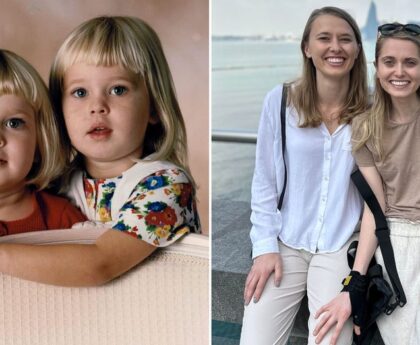Is the COVID quarantine on its way out?
Amid reports that the U.S. Centers for Disease Control and Prevention (CDC) may be considering a change to its COVID isolation guidelines, doctors are sharing their own recommendations.
The current CDC guidance, which was implemented in late 2021, calls for people who test positive for the virus to “stay home for at least five days and isolate from others in your home,” its website states.
CALIFORNIA SCHOOLS NOW ALLOW KIDS TO ATTEND WITH COUGH AND COLD SYMPTOMS, HEALTH DEPARTMENT SAYS
This was a reduction from the 10-day isolation that was recommended at the start of the pandemic.
Although some reports have claimed that the CDC is currently working on revising isolation guidelines ahead of an April announcement, the agency has not confirmed that any updates are forthcoming.
When contacted by Fox News, the CDC issued the following statement.
“No updates to COVID guidelines to announce at this time. We will continue to make decisions based on the best evidence and science to keep communities healthy and safe.”
COVID VARIANT JN.1 NO MORE SEVERE THAN PREVIOUS STRAINS, CDC DATA SHOWS
Some states have already relaxed their own guidelines.
In both Oregon and California, people with COVID do not have to isolate at all — as long as they have been fever-free for 24 hours without using fever-reducing medicines and their other COVID symptoms are improving, according to each state’s health department.
Both states do call for COVID-positive people to continue wearing a mask for 10 days, even after coming out of isolation.
“We are now at a different point in time with reduced impacts from COVID-19 compared to prior years, due to broad immunity from vaccination and/or natural infection, and readily available treatments for infected people,” the California Department of Public Health said in a Jan. 9 statement on its website.
“Most of our policies and priorities for intervention are now focused on protecting those most at risk for serious illness, while reducing social disruption that is disproportionate to recommendations for the prevention of other endemic respiratory viral infections.”
Timothy Brewer, M.D., professor of medicine and epidemiology at UCLA, said on Feb. 14 that he has seen news reports suggesting that the CDC may change its COVID isolation recommendations — “but to my knowledge and in checking the CDC’s website today, their recommendations have not yet changed.”
“Most respiratory viruses — including SARS-CoV-2, the virus that causes COVID-19 disease — influenza and respiratory syncytial virus (RSV) are capable of being spread while persons with these infections are ill,” Brewer told Fox News Digital.
“Being able to isolate oneself when sick with a respiratory viral infection should reduce community spread of these viruses, which remains high or moderately high in much of the country,” he went on.
Advising people to stay home and isolate while sick “makes excellent public health sense,” according to Brewer.
“I don’t think the exact number of days matters as much as waiting until the person is feeling better, meaning no fever for at least 24 hours off antipyretic medicines and all other symptoms are improving,” he said.
ASK A HEALTH EXPERT: ‘SHOULD I TAKE PAXLOVID IF I HAVE COVID?’
Dr. Marc Siegel, clinical professor of medicine at NYU Langone Medical Center and a Fox News medical contributor, said that he thinks the CDC isolation recommendations should be changed, “but not in the same way that Oregon and California have.”
“I think they will be changed and should have been changed a while ago,” Siegel told Fox News Digital.
“I recently interviewed Dr. Mandy Cohen, head of the CDC, and she told me that they are shifting their focus more toward putting doctors and their patients in charge in general, acknowledging individual differences,” he added.
Siegel recommends removing the five-day isolation period.
“The pandemic has been over for several months, and though there was an uptick this winter, with over 20,000 hospitalizations and 1,500 deaths per week at one point, it is now diminishing,” he said.
For those who are sick — particularly if they feel fatigued, are coughing and sneezing, or have a fever — Siegel’s guidance is to stay home.
“If you feel well and the above symptoms have been gone for two days or more, you can return to work with a mask,” the doctor said.
Paxlovid should shorten the amount of time a patient needs to stay at home, Siegel added.
“I would not adopt the exact same recommendations as flu, which is one day after a fever subsides, because COVID spreads more easily than flu, and we still want to keep you out of the workplace if you are contagious,” he said.
“I would say two days for COVID after major symptoms resolve rather than one day,” Siegel said.
MASK MANDATES RETURN TO HOSPITALS IN NYC, SEVERAL OTHER STATES AMID RISE IN COVID, FLU CASES
The doctor also urged the CDC to emphasize that the main guidance should come from the doctor/patient interaction.
“There are individual differences between patients, and those who are immunocompromised or have multiple diseases or are elderly should stay out longer,” he told Fox News Digital. “A doctor should help decide.”
“Removing the current guidelines is a correct step to helping to restore the work force.”
As of the most recently reported week ending Feb. 3, 2024, the share of administered COVID tests with positive results was 10%, a 0.6% decrease from the prior week.
Out of all emergency department visits, 1.8% of them were diagnosed with COVID, a 10.8% week-over-week decline.
CLICK HERE TO SIGN UP FOR OUR HEALTH NEWSLETTER
COVID-related hospitalizations decreased 10% from the prior week.
The share of all U.S. deaths due to COVID was 3.1%, which reflected a 6.1% decrease.
People now have more resources to protect against the virus and its potentially adverse effects, including the availability of antiviral medications, such as Paxlovid, as well as COVID vaccines.
The vaccines have shown to be 54% effective in preventing COVID symptoms in adults, according to CDC data from Feb. 1.
A majority of people, however, are opting to skip the vaccine.
The share of U.S. adults who have received the updated COVID vaccine is 21.9%, while only 12.2% of children are up-to-date.
The vaccination rate is higher for older adults, at 42% among adults age 65 and up.
For more Health articles, visit www.foxnews/health.
Article Source: Health From Fox News Read More




